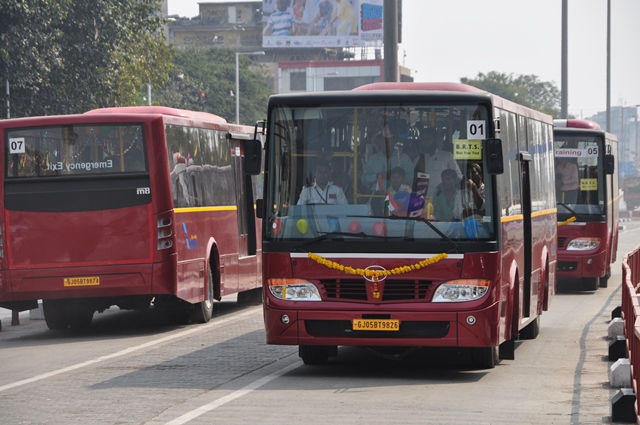At a time when every transco is struggling to get people to board the bus, there’s a faint glimmer of hope, and interestingly, it comes from the Diamond City of Surat.
A year ago, Surat was like Pune in the early 2000s – autorickshaws and two-wheelers ruled the roost, but now, the Surat Municipal Corporation (SMC), has managed to get 93 per cent of the city on a bus!
But how did they manage to do this?
Times of India, in a report has listed exactly what Surat has done. Surat used the two most important things in modern mobility – technology and pricing – to achieve this stellar record. The disadvantage the SMC had to fight – only the SitiLink BRTS buses were air-conditioned while the Surat City Bus (SCB) was not.
Starting in 2013, the SMC launched a new line of services labelled Blueline buses, operated by a private operator. These buses included air conditioned buses. A total of 120 bus stops were constructed by the SMC prior to the Blueline buses being flagged off. The Blueline service is expected to run 125 buses for six years.
The advantage that the SMC had was both SitiLink and the SCB were agencies of the SMC, leading to better existential cooperation between them.
Prior to the launch of SitiLink, private operators ruled the roost. With an average 7-8 per cent growth, the city needed an efficient transit service.
The Sitilink deployed an IT-based system to monitor transit violations like speeding, missing stops and arbirtary change in routes (Wish BMTC did something of this sort). It also has a central messaging system for all vehicles in case of any event or emergency (BEST does this using their Trimax ETMs). Fares are kept relatively low with ₹4 being the minimum fare to compete with share-autos.
However, the SitiLink incurs an annual loss of ₹7-8 crore. The figure is expected to increase as more services are brought in, but is still low given how much losses other transcos (especially DTC) makes.
In order to combat losses, the SMC collects a one-time “vehicle tax” from each new vehicle. At 2 per cent, this gives them enough money to keep operations running smoothly. Along with this, a portion of the Floor Space Index (FSI) along the transit corridors are collected and meant exclusively for public transport.
The important advantage that Surat (and even Ahmedabad) has is that it services are operated by the civic body which knows the city best, and also can raise funds the right way.
Well done Surat!
Featured image: BRTS Buses in Surat (CEPT University)
![]()

